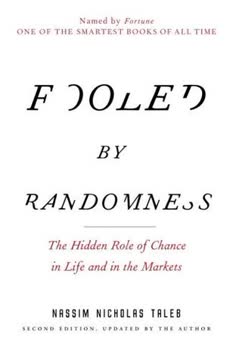Key Takeaways
1. Pricing is about capturing value, not just covering costs
For most businesses, pricing is a profit-leaking paradox.
Value-based pricing. Many companies mistakenly base prices solely on costs, missing out on significant profits. Instead, pricing should focus on capturing the value customers place on a product. This approach allows companies to set prices that reflect what customers are willing to pay, rather than just covering production costs.
Hidden profits. By shifting to value-based pricing, companies can uncover substantial hidden profits. For example, when Emerson Electric implemented a value-based pricing strategy, they discovered customers were willing to pay more than anticipated for their products. This led to higher prices and increased profits without negatively impacting sales.
Pricing power. Understanding and leveraging the value customers place on your product gives you pricing power. This allows you to set prices that maximize profits while still providing value to customers. Companies should continually assess and adjust prices based on customer perceptions of value, market conditions, and competitive landscape.
2. Different customers have different valuations for the same product
The number-one theorem in pricing is that your competitor's price affects how consumers value your product.
Lessons from an auction. Just as bidders in an auction have different maximum prices they're willing to pay, customers value products differently. This concept, "lessons from an auction," is fundamental to effective pricing strategies. Understanding this allows companies to capture more value from customers who are willing to pay more.
Factors affecting valuation:
- Income levels
- Availability of substitutes
- Product characteristics
- Market environment
- Personal preferences
Multi-price mindset. Recognizing these varying valuations, companies should adopt a multi-price mindset. This approach involves offering different pricing options to capture value from customers with different willingness to pay. For example, airlines offer various fare classes to cater to different customer segments, from budget-conscious travelers to those willing to pay premium prices for added comfort and flexibility.
3. Create a culture of profit by empowering employees with information
There are few things more satisfying than watching an entrepreneur who endured the hardships that came with making her vision a reality experience the thrill of gaining consumer acceptance.
Transparency and education. Creating a culture of profit starts with sharing key information with employees, particularly the sales force. This includes:
- Product profitability data
- Operating margins
- Value propositions for each product
Empowered decision-making. When employees understand how their actions impact profitability, they can make better decisions. For instance, a sales representative who knows which products have higher profit margins can focus on promoting these items, ultimately boosting the company's bottom line.
Aligned incentives. Ensure that employee performance metrics and compensation structures align with profitability goals. This might involve revising commission structures or implementing profit-based bonuses. Regularly review and adjust these policies to maintain a strong culture of profit throughout the organization.
4. Use differential pricing to serve customers with varying valuations
Differential pricing allows you to sell your product at different prices to different customers.
Strategies for differential pricing:
- Customer characteristics (age, gender, affiliations)
- Hurdles (coupons, memberships)
- Time-based pricing
- Quantity discounts
- Distribution channels
- Negotiation
Identify customer segments. Differential pricing requires understanding different customer segments and their willingness to pay. For example, movie theaters offer discounts to students and seniors, recognizing their lower willingness or ability to pay full price.
Implementation considerations. While differential pricing can significantly increase profits, it's important to implement it carefully to avoid alienating customers. Ensure that price differences are justified and not perceived as unfair. Use tactics like coupons or memberships to create a sense of exclusivity or reward for those receiving lower prices.
5. Version products to attract different customer segments
Versioning is a multi-price mindset strategy that involves selling similar products to different customers at different prices.
Good, better, best approach. Offer multiple versions of a product at different price points to cater to various customer segments. This allows customers to self-select based on their willingness to pay and desired features.
Versioning techniques:
- A la carte options
- More is better (premium versions)
- Less can be profitable (stripped-down versions)
- Add or subtract features
- Expedited service
- Avoid the wait (priority access)
- Uncertainty (risk-sharing options)
Attract new customers. Versioning not only helps capture more value from existing customers but can also attract new ones. For example, offering a basic version at a lower price point can bring in price-sensitive customers who wouldn't have purchased the full-featured product.
6. Implement segment-based pricing to activate dormant customers
Segment-based pricing is a multi-price mindset strategy that activates dormant customers by employing new pricing strategies.
Innovative pricing models:
- Interval ownership (e.g., timeshares)
- Bundling
- Leasing
- Prepaid options
- Rental
- Two-part pricing
- Payment plans
- Customized pricing
- All-you-can-eat pricing
Unlock new markets. These pricing strategies can open up entirely new customer segments. For instance, interval ownership in the private jet industry made luxury air travel accessible to a broader range of customers, dramatically increasing industry sales.
Address specific customer needs. Each pricing model addresses different customer preferences or constraints. For example, prepaid options appeal to budget-conscious customers who want to control their spending, while leasing caters to those who prefer lower upfront costs or regular upgrades.
7. Apply strategic and psychological touches to refine your pricing strategy
The final step in any Value Decoder analysis is to identify potential substitutes for your product.
Strategic considerations:
- Create publicity through pricing
- Ensure the right customers get your product
- Promote repeat business
- Fit customer perceptions of price levels
Psychological pricing tactics:
- The nine and zero effect
- Payment structure to promote satisfaction
- Prestige pricing
- Anchor pricing
- Quantity-suggestive pricing
- Framing large versus small losses
- Bundling to convey value
- Appealing to bargain-hunting instincts
Balancing act. While it's crucial to capture value through pricing, it's equally important to consider the strategic implications and psychological impact of your pricing decisions. For example, sometimes setting a lower price can generate valuable publicity or ensure that loyal customers can access your product, ultimately benefiting long-term profitability.
Last updated:
FAQ
What’s "The Art of Pricing" by Rafi Mohammed about?
- Focus on Hidden Profits: The book explores how businesses can uncover hidden profits by adopting smarter, more strategic pricing methods.
- Beyond Cost-Plus Pricing: It challenges the traditional cost-plus approach, advocating for value-based and multi-strategy pricing.
- Universal Applicability: Mohammed demonstrates that these pricing strategies are relevant for any business—large or small, product or service, for-profit or nonprofit.
- Actionable Frameworks: The book provides practical tools and frameworks, such as the Value Decoder and multi-price mindset, to help readers implement better pricing immediately.
Why should I read "The Art of Pricing" by Rafi Mohammed?
- Immediate Profit Potential: The book shows how small changes in pricing can lead to significant increases in profits, often with little additional cost.
- Practical and Accessible: Written in a clear, friendly style, it makes complex pricing concepts understandable and actionable for managers at any level.
- Real-World Examples: Mohammed uses case studies from companies like Ford, P&G, and Dell to illustrate the impact of strategic pricing.
- Competitive Advantage: Mastering pricing strategies can help businesses outperform competitors and adapt to changing markets.
What are the key takeaways from "The Art of Pricing" by Rafi Mohammed?
- Pricing Is Strategic: Pricing should be seen as a core business strategy, not just a number or afterthought.
- Value-Based Pricing: Prices should reflect the value customers place on a product, not just the cost to produce it.
- Multi-Price Mindset: Offering a range of pricing options (differential pricing, versioning, segment-based pricing) captures more customers and profit.
- Organizational Culture Matters: Creating a culture of profit, where all employees understand and contribute to pricing strategy, is essential for success.
How does Rafi Mohammed define "hidden profits" in "The Art of Pricing"?
- Untapped Revenue Opportunities: Hidden profits are additional earnings that businesses can realize by optimizing their pricing strategies.
- Beyond the Obvious: These profits are often missed when companies rely on simplistic or traditional pricing methods.
- Examples in Practice: The book cites Ford’s $3 billion profit increase as a result of better pricing, not new products or cost-cutting.
- Accessible to All: Mohammed argues that virtually every business has hidden profits waiting to be uncovered through smarter pricing.
What is the "multi-price mindset" in "The Art of Pricing" and why is it important?
- Serving Diverse Customers: The multi-price mindset means offering different prices or versions to match the varied valuations of different customers.
- Three Core Strategies: It includes differential pricing (charging different customers different prices), versioning (good/better/best options), and segment-based pricing (new pricing models to activate dormant customers).
- Maximizing Profits and Reach: This approach allows businesses to capture more profit from high-value customers and attract price-sensitive ones.
- Real-World Prevalence: Airlines, hotels, and even manufacturers like Dell use this mindset to great effect.
How does "The Art of Pricing" by Rafi Mohammed explain value-based pricing?
- Customer Value Focus: Value-based pricing sets prices according to the value perceived by customers, not just production costs.
- Dynamic and Contextual: The value of a product can fluctuate based on circumstances (e.g., umbrellas cost more when it rains).
- Cost as a Floor, Not a Guide: Costs should only set the minimum price; the real determinant is what customers are willing to pay.
- Practical Application: The book provides examples and frameworks (like the Value Decoder) to help businesses assess and capture value.
What is the "Value Decoder" framework in "The Art of Pricing" and how does it work?
- Five Components of Value: The Value Decoder breaks down value into price/availability of substitutes, characteristics relative to competitors, customer income, price of related products, and market environment.
- Step-by-Step Analysis: Businesses use the framework to systematically assess each factor affecting how customers value their product.
- Guides Pricing Decisions: By understanding these components, companies can set prices that better reflect true customer value.
- Adapts to Change: The framework helps businesses adjust prices as market conditions and customer perceptions shift.
What are the main differential pricing techniques discussed in "The Art of Pricing" by Rafi Mohammed?
- Customer Characteristics: Pricing based on age, gender, location, or organizational affiliation.
- Hurdles: Using coupons, memberships, or other actions to segment price-sensitive customers.
- Time and Quantity: Charging different prices based on purchase timing or volume.
- Distribution and Bundling: Varying prices by sales channel or offering discounted bundles.
- Negotiation: Customizing prices through direct negotiation with customers.
How does "The Art of Pricing" by Rafi Mohammed approach versioning as a pricing strategy?
- Good/Better/Best Options: Offering multiple versions of a product at different price points to match customer valuations.
- A La Carte and Feature Additions: Allowing customers to customize their purchase with add-ons or stripped-down versions.
- Expedited Service and Avoiding Waits: Charging premiums for faster service or priority access.
- Managing Uncertainty: Using contracts or options to share risk and create new pricing tiers.
What is segment-based pricing in "The Art of Pricing" and how can it grow a business?
- Activating Dormant Customers: Introducing new pricing models (leasing, prepaid, rental, all-you-can-eat) to attract customers who wouldn’t buy otherwise.
- Bundling and Interval Ownership: Selling products in bundles or fractional shares to make them accessible to new segments.
- Flexible Payment Plans: Offering payment structures that better fit customer cash flows or preferences.
- Customization: Tailoring prices to individual customer needs or risk profiles to expand the customer base.
What organizational changes does Rafi Mohammed recommend in "The Art of Pricing" to create a "culture of profit"?
- Share Profit Information: Make employees aware of product profitability and how their actions affect the bottom line.
- Empower the Sales Force: Give sales teams the tools and incentives to focus on high-margin products and customers.
- Plug Profit Leaks: Regularly review and fix unprofitable promotions, unnecessary discounts, and flawed policies.
- Align Metrics with Profitability: Shift success metrics from volume or market share to profitable volume and net profit.
What are the best quotes from "The Art of Pricing" by Rafi Mohammed and what do they mean?
- “Every company I’ve met has had hidden profits.” – Emphasizes that most businesses have untapped profit potential in their current products and services.
- “Pricing is not about setting numerical prices, it’s about creating a set of strategies to maximize your company’s profits.” – Highlights the strategic, multi-faceted nature of effective pricing.
- “Stop giving the value away!” – Urges businesses to recognize and charge for the value they provide, rather than defaulting to low or cost-based prices.
- “The multi-price mindset is the key ingredient to pricing for profits and growth.” – Stresses the importance of offering varied pricing options to capture more profit and serve more customers.
- “A 1% net price increase will, on average, boost operating profits by 11%.” – Demonstrates the outsized impact that even small pricing improvements can have on profitability.
Review Summary
The Art of Pricing receives mixed reviews, with an average rating of 3.72 out of 5. Positive reviewers praise its insights on pricing strategies, calling it a must-read for business owners. They appreciate the book's clear explanations and practical examples. Critics find it basic or outdated, particularly regarding modern pricing methods. Some readers note its repetitiveness but acknowledge its value in challenging conventional pricing thoughts. The book is commended for its accessibility to laypeople and its potential to improve business profitability through innovative pricing approaches.
Similar Books










Download PDF
Download EPUB
.epub digital book format is ideal for reading ebooks on phones, tablets, and e-readers.





